Metal Gear Solid V: Ground Zeroes Performance On ROG G751JL (GTX 965M) Gaming Laptop
The Metal Gear series has garnered an extraordinary fan-base over its 27 years in existence, since July 1987. It was available on the MSX2 (!!) and NES (if you are old enough to know what they were!). As various consoles and platforms have come and gone, Metal Gear; considered to be the progenitor of the stealth genre, has stood the test of time. It has since then made it across more platforms, the latest installment Metal Gear Solid V: Ground Zeroes is on PC, PS3, PS4, XBOX 360, XBOX ONE, and acts as a prologue to Metal Gear Solid V: The Phantom Pain which is currently due for release later this year. It's good to know we (PC gamers!) have the best platform to showcase games with more definition and effects available than any other, when you the see Snake on the title screen for the first time, you must agree the graphics look truly impressive.
It used to be that the introduction mini-movies were the best-looking parts of the game, because when you enter the actually game, you were left wondering why the game didn't look as good as the pre-rendered intro. Now, we don't need to worry about that, we have the POWERRRRR! Here are some screenshots from the real-time rendered cinematic intro:
[gallery include="" size="medium" link="file" template="file-gallery" columns="2"]
You are Snake, and your mission is to infiltrate Camp Omega, rescue Cipher agent Paz Ortega Andrade and Sandinista child soldier Ricardo "Chico" Valenciano Libre. You have the freedom to choose in what order events in the story take place by selecting missions in any order you like. There are seven missions and upon completion of the main series you will unlock side ops set at different points in the day, and there are also two extra op missions to unlock as well. To accomplish a more open world experience, new ways of traversal and sneaking methods are now available, such as taking a car, a jeep, or even a helicopter around the mission area.
Fox Engine
As well as giving you taste of what's to come in Metal Gear Solid V: The Phantom Pain, this is a great opportunity to show off the latest graphics engine. It has been a long wait for the sequel to MGS4: more than six years in fact! It's been worth the wait as Kojima Productions has spent much of the time developing the new cross-platform, cross-generational Fox Engine, with their goal of making the best engine in the world. Despite the fact the PC version was late to the party, it compensates by offering graphics beyond current-generation consoles, and claims high scale-ability from older gaming PCs up to 4K goodness - if you spent all your lunch money on the latest dream machine.
The ultra-realistic images are courtesy of Physically-Based Rendering (PBR) which allows materials, surfaces and objects to react to lighting and shading in real-time, as they would in the real world, the images can be so convincing that in testing many gamers were completely stumped when put to the test of identifying whether an image was an in-engine real-time PBR reproduction. Subsurface Scattering to render translucent materials such as natural skin to create life-like complexion, Deferred Rendering to render dynamic lighting efficiently, Normal mapping for simulating surface details such as bumps and dents without using more polygons, some high-resolution face and full body capture that enables the creation of detailed heads and character models. This and more are further explained in Kojima Productions' GDC Fox Engine deep-dive.
PC-Exclusive Graphics Enhancements
The PC edition of Metal Gear Solid V: Ground Zeroes marks the first use of 4K compatibility in the whole Metal Gear Solid series, boasting an increase in the number of simultaneous light sources, the number of models that can be displayed on screen, increased shadow resolution, improvements in shading and character hair, and the all-new Screen Space Reflections. The game itself is also leveraging the NVIDIA 4K technology within; great for those who plug their G751 into an external 4K display on the DP port.
Metal Gear Solid V: Ground Zeroes Performance: Best Gameplay Settings
Where the G751JY (GTX 980) is the big brother of the G751JL (GTX 965M), the 'JL' is also aimed to satisfy hardcore gamers, but is slimmer and more portable. It features up to a quad-core Intel Core i7 4860HQ processor, 32GB of DDR3 and Nvidia GTX 965M graphics.
G751JL tested spec:
- Intel Core i7 4720HQ processor
- 16GB 1600MHz DDR3L (4x4GB)
- Nvidia GTX 965M graphics card 4GB DDR5
- 128GB PCIe SSD option + 2TB SATA HDD
- Full HD (1920 x 1080) IPS display
- ASUS PA328Q 4K (3840 X 2160) IPS display
- [ROG Gladius gaming mouse]
- Nvidia GeForce driver: 344.54 WHQL
- Windows 8.1 Pro
First things first, let's check out at what in-game video options there are and what happens when we max out all the settings, so we can see if we need to do any tweaking. The opening opening scene with the wide vista of the Camp Omega is a graphics-heavy scenario, making it the ideal place to start.
There is a Frame Rate option to set a 30FPS limit, but we feel Nvidia's frame rate target software in its GeForce Experience program should have better results for prolonging the battery life.
The results show that running Metal Gear Solid V: Ground Zeroes in Full-HD is no problem at all for the G751JL, with power to spare; averaging 38.5FPS (Max=39/Min=37) with everything maxed out in the most demanding scenes. With the extra power to spare we even tested it out on an ASUS PA328Q 4K display (to try out Nvidia's 4K merits), but first let's look at what settings the game offers and how they affect performance:
Model Detail
Model Detail means level of detail with a minor impact on overall image quality. This adjusts the quantity and/or detail of things such as tufts of grass, cacti, bushes, powerlines, various objects and buildings. Compared to other settings we feel the differences seem minor, and the impact on tested performance is also minor, however, it does makes an impact in the opening scene. If you want an FPS boost try to lower other settings before trying this one.
Textures
We found there are no discernible differences between Extra High and High. So you may as well leave it on Extra High since it doesn't impact performance much either, and you have more than enough VRAM (4GB). However, if set to Medium, the loss of detail is significant; the quality of distant textures will be reduced first.
Texture Filtering Quality
Anisotropic Filtering sharpens textures, it is more noticeable in the mud, and the surface of concrete. On a modern graphics card this can be left maxed out since there's virtually no impact on performance.
Shadows
More shadows, more defined and dynamic shadows, to compliment all those extra deferred lights. Unless your shadow looks in the wrong place entirely or it is missing altogether, it's unlikely you'll really notice it (as it should - the best effects are the most subtle!) so you can lower the detail here if you need to, but of course, we still want shadows in a stealth game!
[gallery size="medium" link="file" template="file-gallery" columns="2" ids=""]
Lighting Quality
The advantage of having a PC is that you can bring more realism into a game which looks fantastic already. Deferred rendering and lighting allows more dynamic lights and improved lighting. While the number of lights is limited to those which are nearest on consoles, there is a dramatic improvement when PCs can render all of the lighting simultaneously as seen at the beginning of the mission and in unlockable side-missions. You can enable all of the deferred lights by setting lighting quality to Extra High (for example, the PlayStation 4 is limited to High). Considering whether to gain a few frames per second or have superior graphics compared to consoles? It's a no-brainer - turn it up!
 The view from the fictional Cuban black site Camp Omega is the most demanding scene in the prologue. Oooooo... lights......
The view from the fictional Cuban black site Camp Omega is the most demanding scene in the prologue. Oooooo... lights......
Screen Filtering
Screen Filtering is better known as Post-Processing, since it enables Bloom Lighting, Depth of Field, Post-Process Anti-Aliasing, but also the all-new Screen Space Reflections.
- Set on Low - enables Bloom Lighting, most visible on fences directly illuminated by spotlights and static lights (visible on fences directly illuminated by spotlights and static lights).
- Set on High - activates Depth of Field and Post-Process Anti-Aliasing (combats many of the game's heavily aliased edges).
- Set on Extra High - enables Screen Space Reflections, which are exclusive to the PC (improves the appearance of extremely bright light cast by the spotlight).
Hideo Kojima makes heavy use of Depth of Field to simulate the out of focus foregrounds or backgrounds seen in movies. This is one of the major differences between the PC version and the PS4 version. Also exclusive to PCs are Screen Space Reflections, which adds real-time, screen-wide reflections to pools of water, puddles, and reflective materials when the Extra High detail level is selected.
Out of all settings Screen Filtering has the highest impact on performance, with the activation of Depth of Field and Post-Process Anti-Aliasing requiring significant processing power. Given the impact in fidelity that comes with them its not surprising.
If need be, setting this to High sacrifices Screen Space Reflections, but makes a significant difference (a few frames per second) and the difference in quality is less obvious.
[gallery size="medium" link="file" template="file-gallery" ids=""]
Screen Space Ambient Occlusion (SSAO)
Ambient Occlusion (AO) adds contact shadows where two surfaces or objects meet, and where objects block light from reaching another nearby game element. Simply put, SSAO adds depth and realism, but it comes at the cost of a few frames per second. This comes second only to Screen Filtering in terms of performance impact, and this would be the second setting to lower if you need to squeeze out a few more frames per second. Setting SSAO to High only makes a subtle difference and you probably won't even notice it at night.
[gallery size="medium" link="file" template="file-gallery" ids=""]
Special Effects
Effects like the constant rain become larger and more detailed, it is subtle but adds to the overall atmosphere. It would be extremely hard to notice any difference between Extra High, High and Low, but you can still leave it on Extra High since we found this makes minimal impact on performance anyway.
Turning up the resolution: Gaming in 2K
2K displays (2560 X 1600 or 2560 X 1440) are increasingly popular and at 27" or above the extra pixels are really noticeable. We plugged the G751JL into the PA328Q over HDMI and set it to 2560 x 1440 to run these tests.
With everything maxed out in 2K, the G751JL had a respectable average of 26FPS (Max=27/Min=25), all it needs is a little tweaking to get over the 30FPS hump. All the options add to the overall experience, but if we choose the options which increase the frame-rate but make the difference in quality least noticeable, we can easily play the game in 2K with great detail. These are the first three options which you should try first: Screen Filtering, SSAO and Shadows.
If you check out the screenshots below you'll be hard-pressed to find the difference at a glance.
[gallery size="medium" link="file" template="file-gallery" ids=""]
We can see SSAO alone can almost take us there; averaging 29.3FPS (Max=30/Min=28), this actually runs fine considering the pace of the game and we are testing a heavy graphical scenario, but for the sake of technicality and peace of mind that there are no expected stutters during intense shootouts, let's try lowing both Screen Filtering and Shadows.
The result is a great looking game in 2K with an average of 32.2FPS (Max=33/Min=31 )!
 Screen Filtering and Shadows = High
Screen Filtering and Shadows = High
Gaming in 4K
To run a game in 4K, the laptop needs to pump out four times the pixels onto the display, needless to say this will be a huge ask, so we started by turning everything down to compensate.
[gallery include="" size="medium" link="file" template="file-gallery"]
G751JL is capable of 4K gameplay with an average of 30.650FPS (Max= 32FPS/Min= 29FPS) with everything at minimum/baseline settings, and it still looks great! Kojima Production's goal to make the 'best engine in the world' may be ambitious, but graphics like this as the baseline makes me think six years of work was indeed not wasted, now... make more games please!
Author
Popular Posts

How to adjust your laptop's P-Cores and E-Cores for better performance and battery life

How to Cleanly Uninstall and Reinstall Armoury Crate
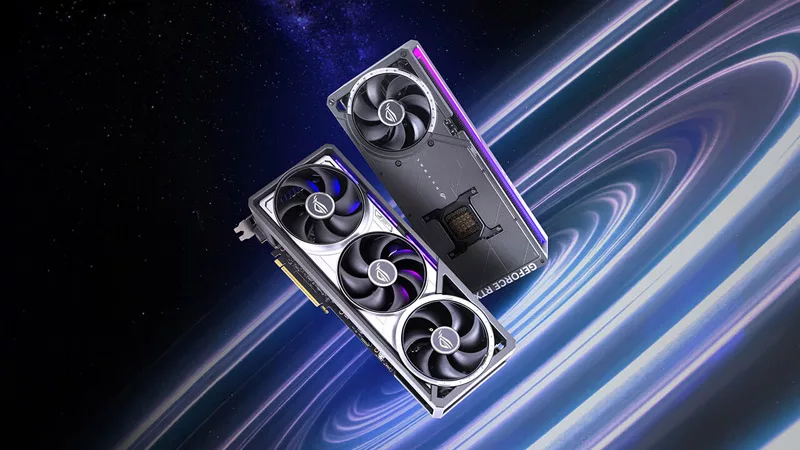
Introducing the ROG Astral GeForce RTX 5090 and 5080: a new frontier of gaming graphics
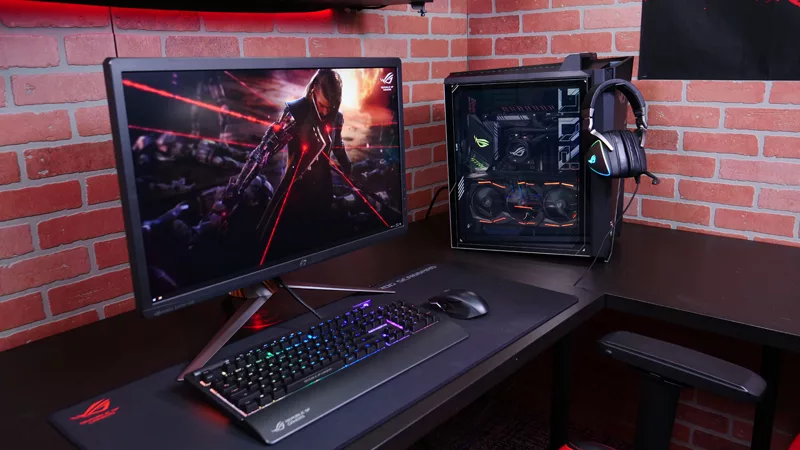
How to configure your PC's RGB lighting with Aura Sync
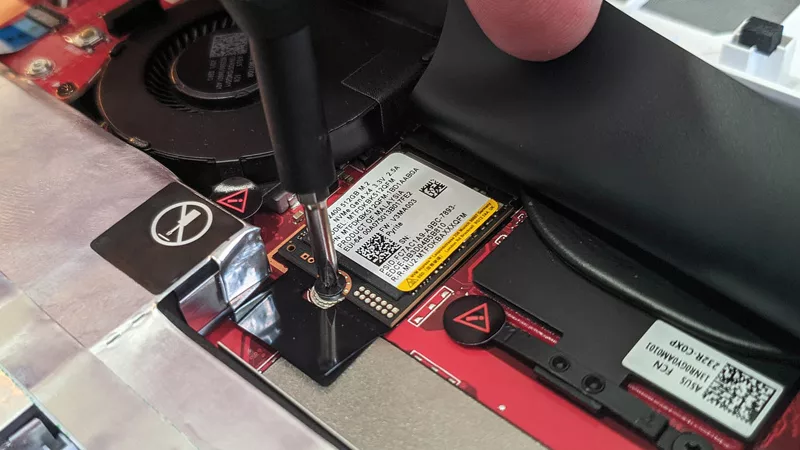
How to upgrade the SSD and reinstall Windows on your ROG Ally or Ally X
LATEST ARTICLES
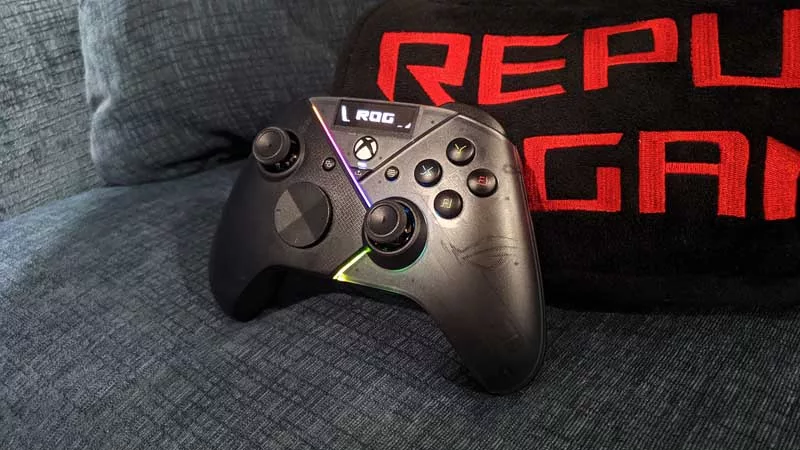
Hands-on: The ROG Raikiri Pro took my couch gaming to the next level
I've been a diehard PC gamer all my life, but I often play on the couch. The ROG Raikiri Pro has improved my living room PC gaming immeasurably thanks to a few useful features and loads of customizability.
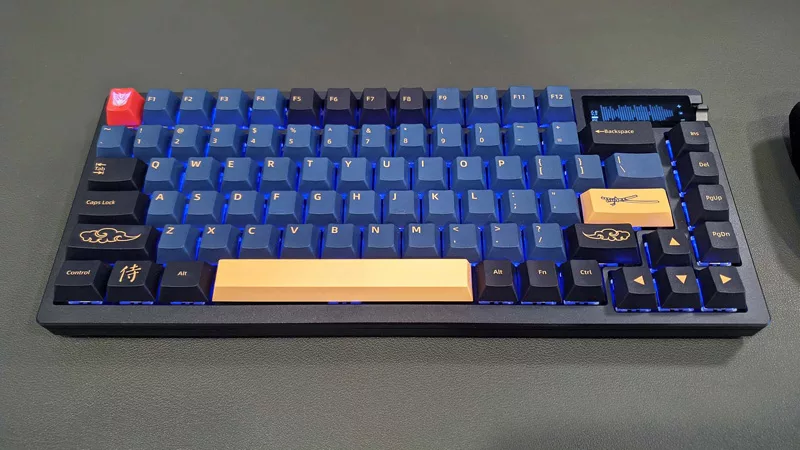
Hands-on: The ROG Azoth became the canvas for the keyboard of my dreams
Ever since I bought my first mechanical keyboard, I’ve been on a mission to mod and upgrade, mod and upgrade. But I think the ROG Azoth may actually be my endgame.
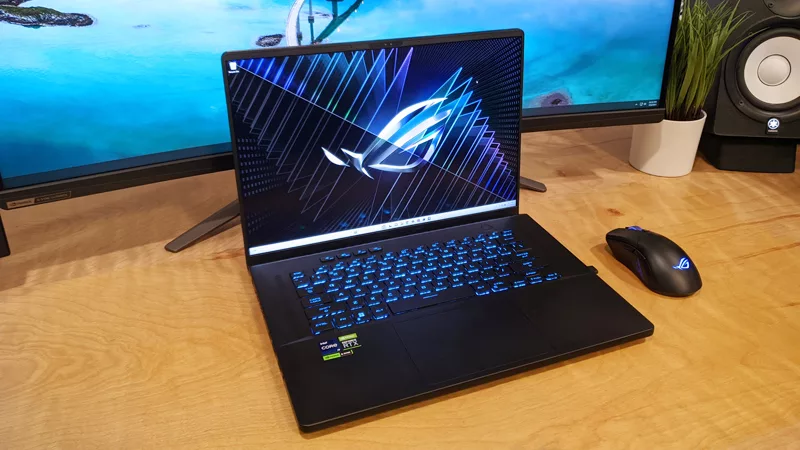
The Zephyrus M16 blends outstanding HDR gaming performance with undeniable luxury
The new ROG Zephyrus M16, with its Nebula HDR display, is like bringing a high-end home theater gaming setup with you wherever you go.
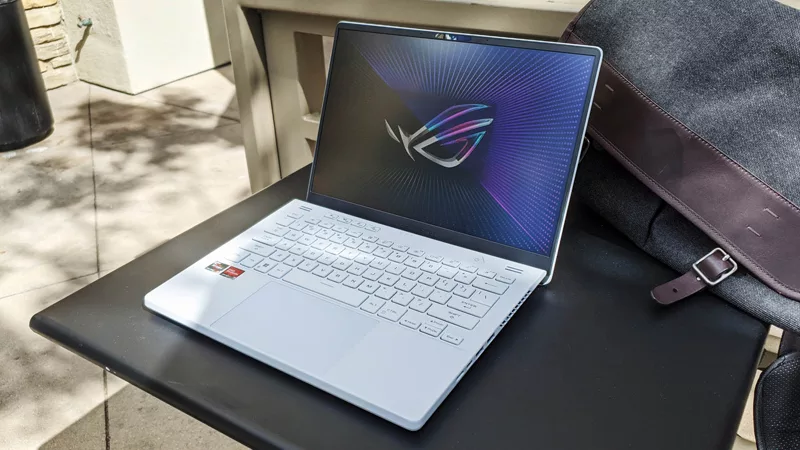
Radeon graphics and a stellar new display reinvigorate 2022 ROG Zephyrus G14
For a long time, I had to choose between underpowered ultraportable laptop and large laptops capable of gaming. But the ROG Zephyrus G14 puts admirable gaming chops into an ultra portable machine that travels anywhere.
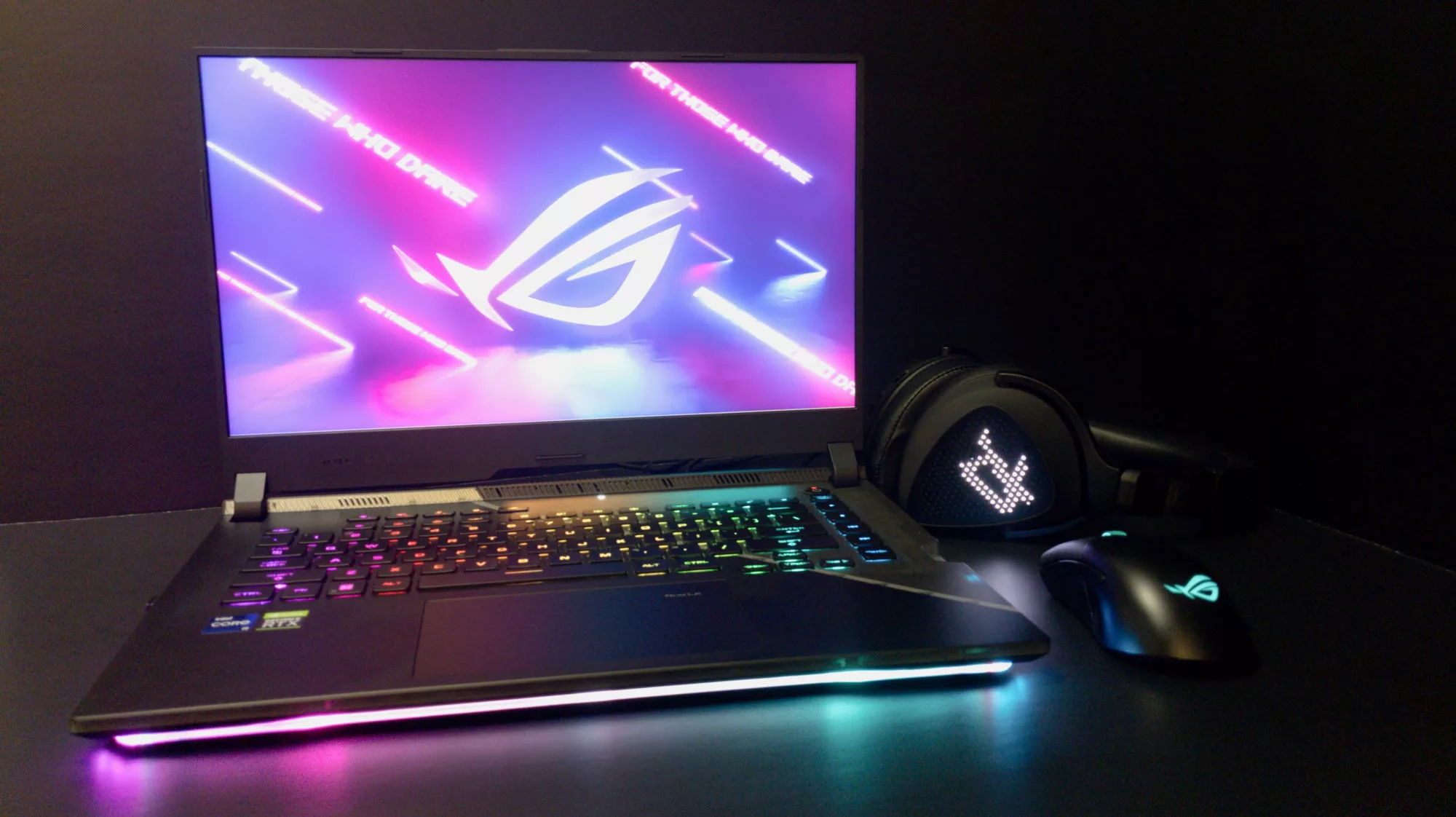
Ready to rumble out of the box: Hands-on with the ROG Strix SCAR 15
Living on the move or in a smaller space isn't a roadblock to high-end gaming. The ROG Strix SCAR makes portable powerful.
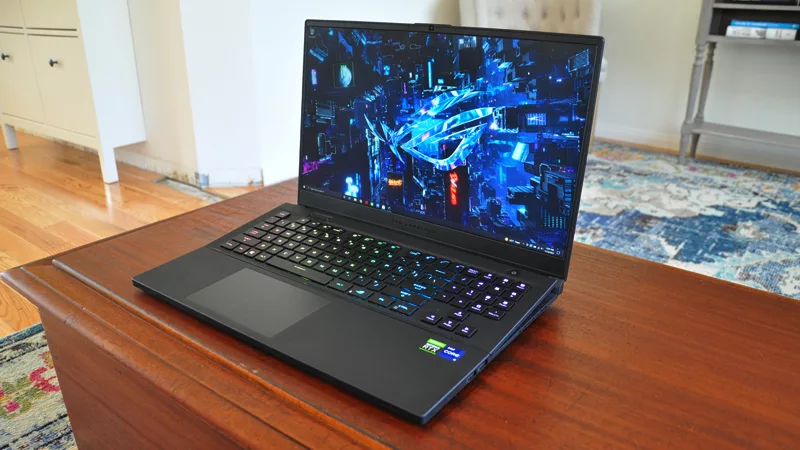
The ROG Zephyrus S17 is an outstanding mixture of power and portability
The S17 has it all: top-tier hardware in a slim package with all the bells and whistles.






